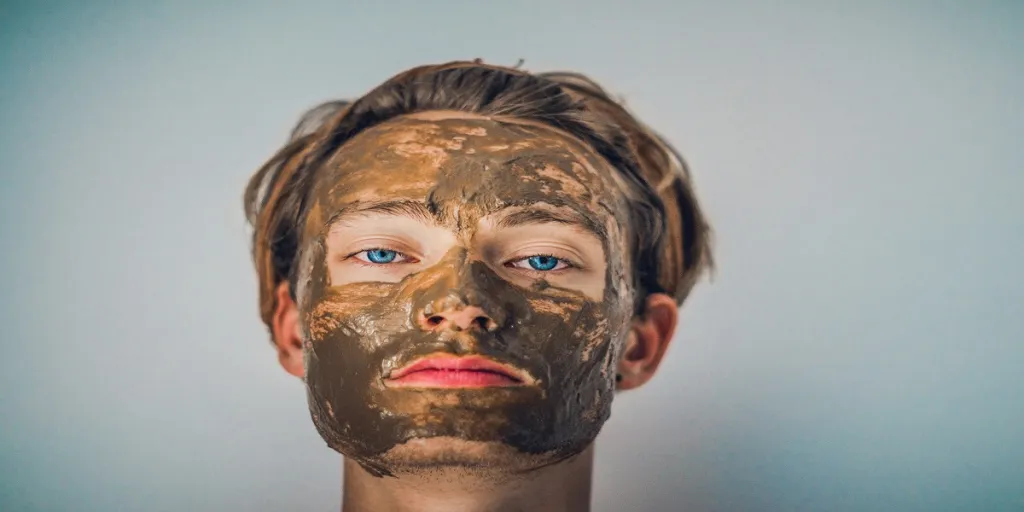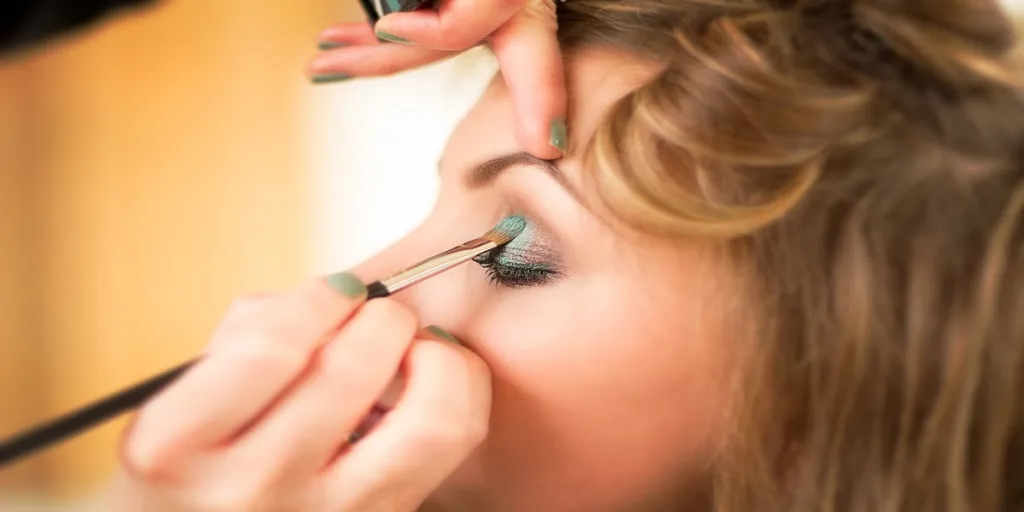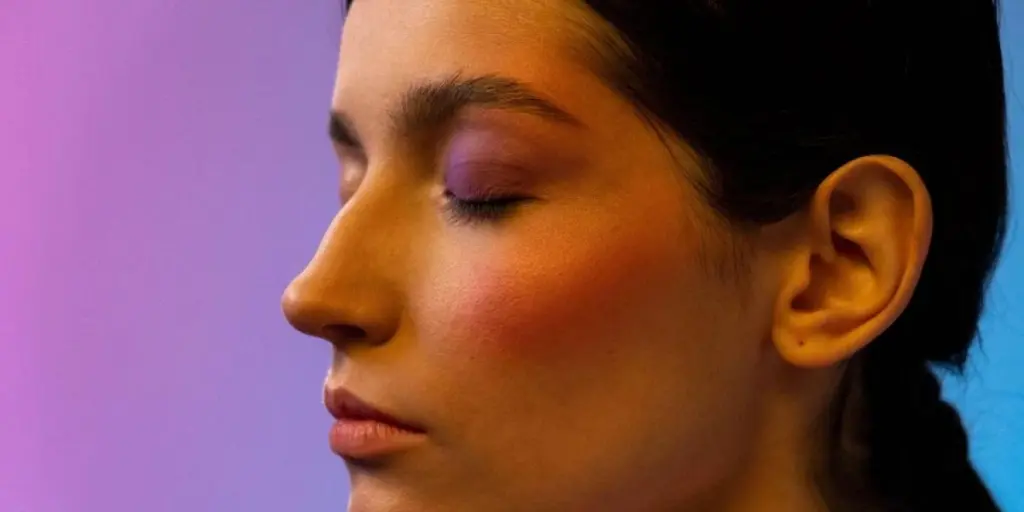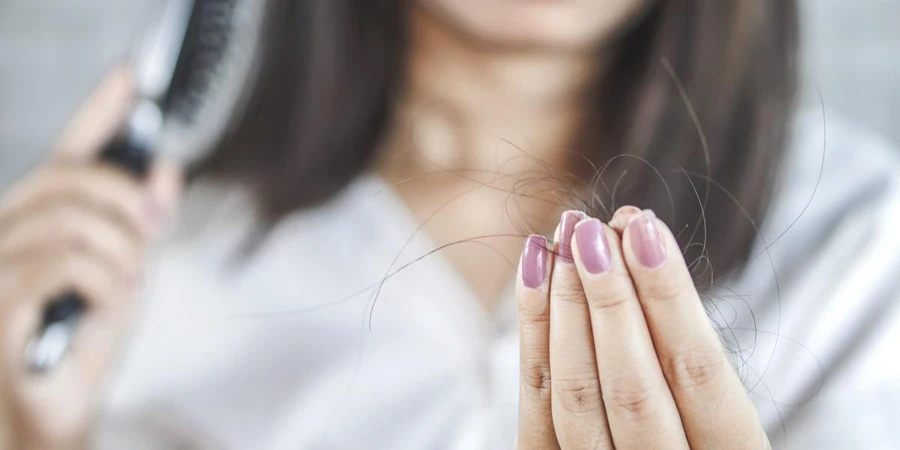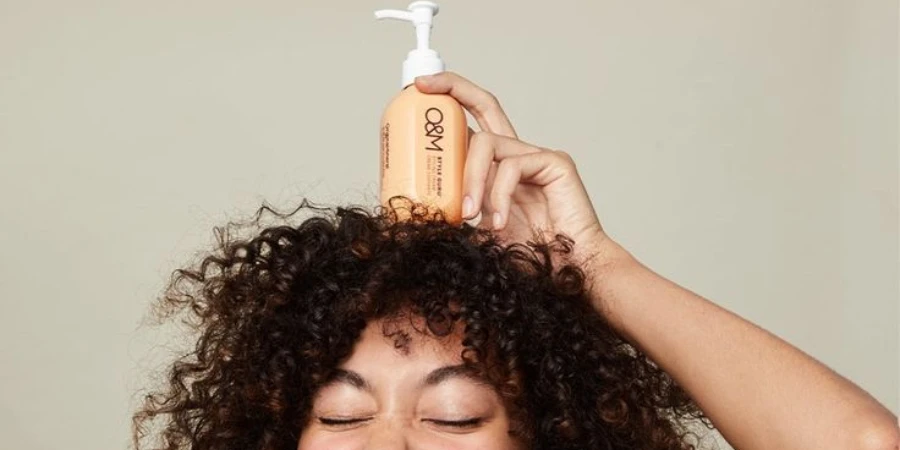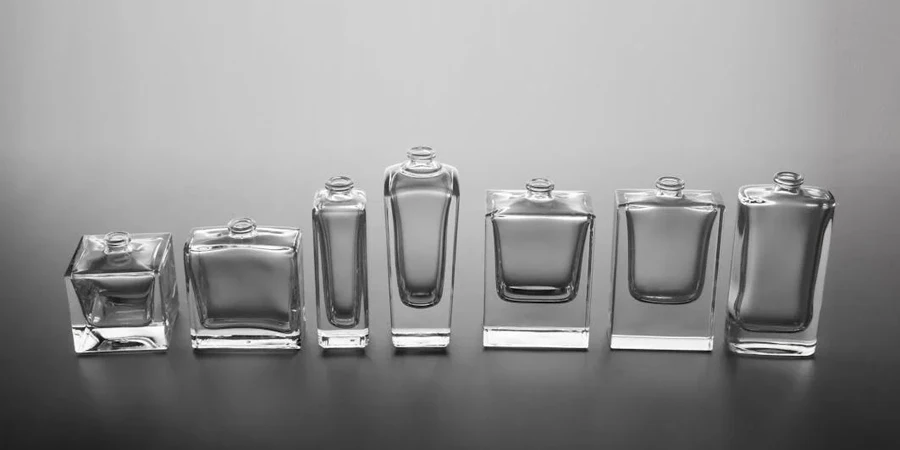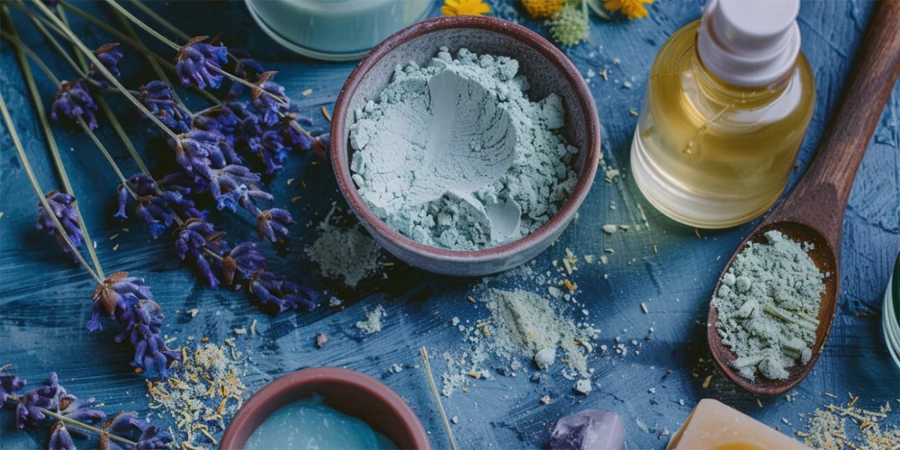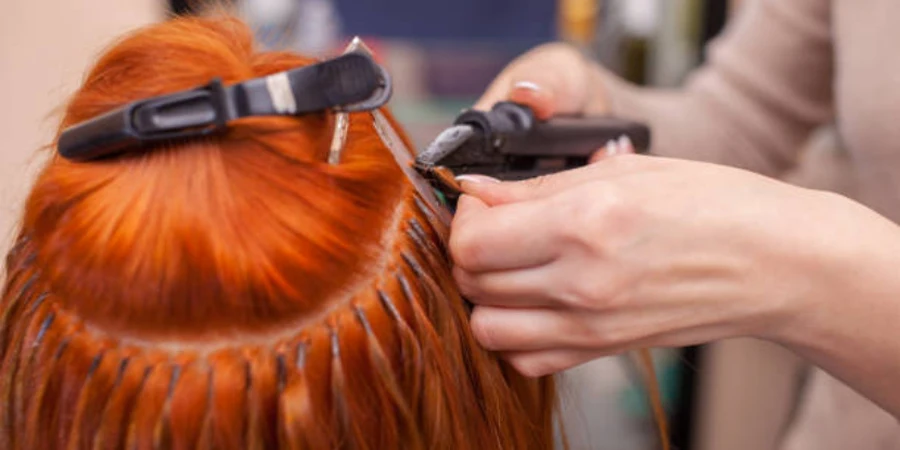Men, traditionally less inclined to indulge in complex skincare routines, are now stepping into the realm of self-care with enthusiasm. This shift in perception and behavior has opened up a lucrative market for retailers catering to men’s evolving grooming needs. To succeed in this dynamic landscape, retailers must first understand the unique challenges men face regarding skincare.
This article will delve into men’s skincare, offering insights into the causes and solutions for three of the most prevalent skin issues: acne, razor bumps, and dryness. From product recommendations to marketing strategies, we’ll provide a comprehensive guide to help retailers tap into this emerging market while promoting healthier and happier skin for men.
Table of Contents
Market for men’s skincare products
Understanding men’s skin: How it differs
Acne: Breaking down the basics
Razor bumps: A painful predicament
Dryness: Nourishing and hydrating men’s skin
Conclusion
Market for men’s skincare products
The skincare products market has seen remarkable growth, reflecting a global shift towards better self-care and grooming. In 2022, it surged to an impressive US$ 135.83 billion, and projections suggest a continued upward trajectory with a compound annual growth rate (CAGR) of 4.7% from 2023 to 2030.
Within this expansive market, moisturizers have carved out a significant niche, accounting for US$ 10.12 billion in 2022. Anticipated to rise further, these figures are poised to reach US US$ 14.40 billion by 2030, marked by a CAGR of 4.48% during the period from 2023 to 2030.
Several factors have been instrumental in this growth. The increasing awareness of skincare routines and the mounting skin issues attributed to modern lifestyles, stress, and pollution have propelled the demand for skincare products, with moisturizers at the forefront.
The realm of men’s personal care has also experienced substantial growth, reflecting changing perceptions of grooming among men. In 2021, the global men’s personal care market was valued at an impressive US$ 30.8 billion, with projections indicating a robust CAGR of 9.1% from 2022 to 2030. Simultaneously, the male skincare market, valued at US$ 13.28 billion, is expected to surge to US$ 21.74 billion by 2030, with a CAGR of 6.4% during the period from 2022 to 2030.
Understanding men’s skin: How it differs
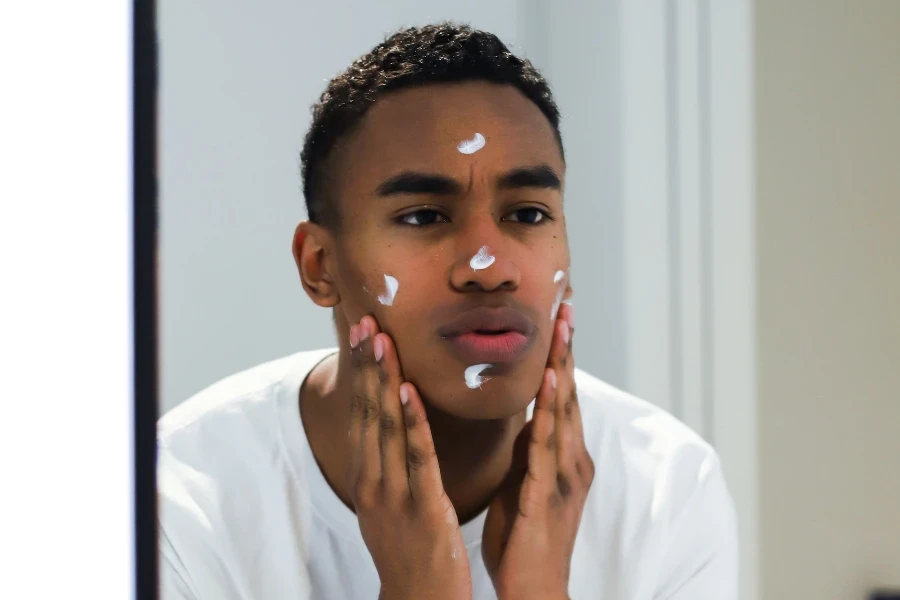
While men and women share many similarities in skin structure and function, several notable physiological differences emphasize the need for tailored skincare routines. Recognizing these distinctions is crucial for effectively formulating and marketing skincare products to each gender.
- Sebum production: Men typically have higher levels of sebum production due to higher levels of androgens (male hormones) like testosterone. This excess oil can make men more prone to acne and oily skin, necessitating products designed to regulate oil production.
- Skin thickness: Men generally have thicker skin due to a denser collagen network and more collagen fibers. This thickness makes men’s skin more resilient to aging and less prone to wrinkles, but also requires different moisturization and exfoliation strategies.
- Hair growth patterns: Facial hair growth leads to unique challenges like razor bumps and ingrown hairs. Products that address these issues, such as pre-shave oils and specialized aftershave treatments, are essential for an effective skincare routine.
- pH levels: Men’s skin tends to have a slightly lower pH level, which can affect the choice of cleansers and skincare products, as maintaining the skin’s natural pH balance is crucial for overall health and appearance.
- Collagen density: Women’s skin typically experiences a more rapid decline in collagen density with age, leading to increased susceptibility to fine lines and wrinkles. Men’s skin, with its denser collagen network, ages more slowly but still requires proper care to maintain its youthful appearance.
These physiological distinctions highlight the importance of tailored skincare routines for both men and women. One-size-fits-all approaches may not effectively address the unique needs and challenges each gender faces. By understanding and catering to these differences, skincare retailers can develop products and routines that maximize the benefits and minimize the drawbacks of each individual’s skin type, ultimately leading to healthier and more radiant skin for all.
Acne: Breaking down the basics
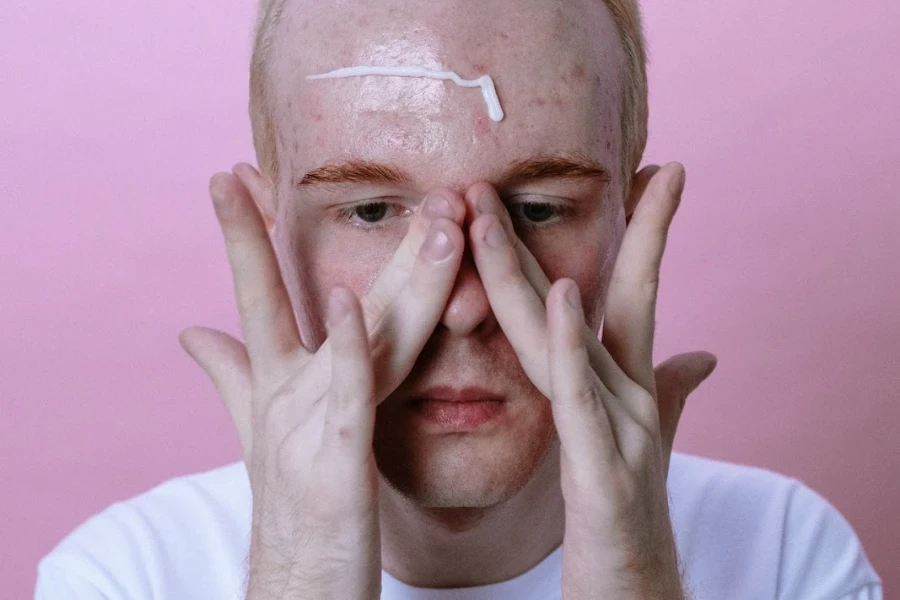
Acne is a common skin issue that affects men of all ages. While it may seem like an adolescent-only concern, acne can persist well into adulthood due to various factors. Understanding these causes is essential for creating an effective skincare routine tailored to men’s needs.
- Hormonal fluctuations: Hormonal fluctuations, particularly in androgens like testosterone, play a significant role in the development of acne in men. These fluctuations can lead to increased sebum (oil) production, which clogs hair follicles and pores when combined with dead skin cells and bacteria, creating an ideal environment for acne breakouts.
- Genetics: Genetic factors can make some people more prone to acne than others.
- Excess oil production: Medically known as seborrhea, it is a primary contributor to the development of acne. This overproduction of sebum, a naturally occurring oil, can lead to several acne-related issues, such as clogged pores, bacterial growth and inflammation.
- Lifestyle factors: Factors such as diet, stress, and skincare habits all contribute to the skin’s condition.
Product recommendations
Creating an effective skincare routine to combat acne in men involves selecting products that address these underlying causes while being gentle on the skin. Consistency is critical, as it can take several weeks to see noticeable improvements.
- Cleansers with salicylic acid or benzoyl peroxide: Use a gentle cleanser to avoid stripping the skin of its natural oils, which can lead to the overproduction of sebum. Salicylic acid effectively penetrates pores, exfoliating the inside walls and preventing blockages. At the same time, benzoyl peroxide helps to kill acne-causing bacteria and reduce inflammation.
- Exfoliation: Helps remove dead skin cells that can contribute to clogged pores. Exfoliating cleansers are a good place to start for men, but there are also chemical exfoliators like glycolic acid, lactic acid, and salicylic acid. Refrain from using harsh physical scrubs, which can irritate the skin and potentially exacerbate oil production.
- Non-comedogenic moisturizers: Choose lightweight, oil-free moisturizer for oily or acne-prone skin. These moisturizers hydrate the skin without adding extra oil.
- Products with Retinoids: Retinols can help reduce acne by preventing the formation of new comedones (clogged pores) and increasing cell turnover
- Spot treatments for active breakouts: Treatment with benzoyl peroxide or sulfur can help address individual breakouts effectively.
Razor bumps: A painful predicament
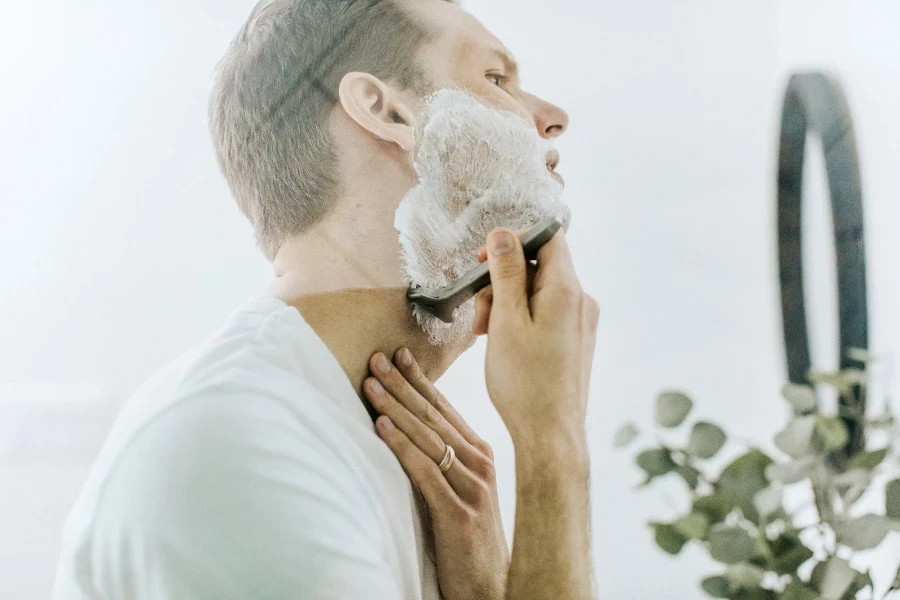
Razor bumps, also known as pseudofolliculitis barbae, are common for men, especially those with curly hair. These painful, red, and itchy bumps occur after shaving and can be uncomfortable. Understanding the causes of razor bumps is essential to effectively prevent and manage them:
- Curly hair growth: Curly or coarse facial hair tends to curve back into the skin after shaving, leading to ingrown hairs and razor bumps.
- Improper shaving techniques: Using a dull blade or shaving too aggressively can irritate the skin, leading to razor bumps and other shaving-related issues.
- Repeated shaving in the same area: Shaving the same area repeatedly in a single session can increase the likelihood of razor bumps and irritation.
- Sensitive skin: Men with sensitive skin are more prone to developing razor bumps. The friction from shaving can exacerbate this sensitivity.
- Ingrown hairs: Ingrown hairs occur when hair curls back into the skin instead of growing straight out.
Product recommendations
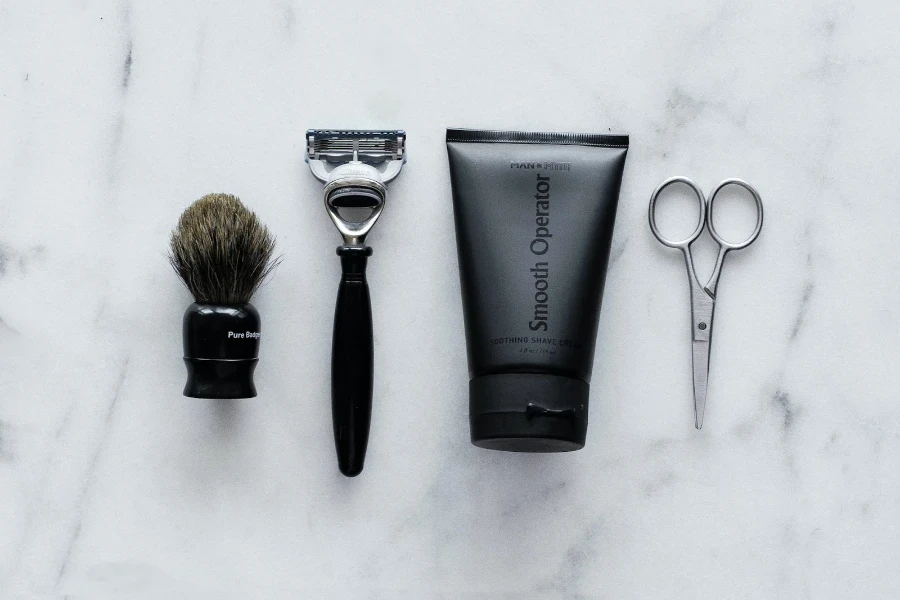
In addition to these shaving techniques, men should regularly exfoliate their skin, using quality shaving cream, moisturizing and soothing aftershave products.
- Regular exfoliation: Gently exfoliate the skin a few times a week to remove dead skin cells and prevent hair from getting trapped beneath the surface.
- Pre-shave softening: As mentioned, it can help to shower before shaving, apply a warm, damp cloth or use a pre-shave oil to soften the hair and open the hair follicles.
- Proper shaving cream: Invest in a high-quality shaving cream or gel to provide a smooth surface for the razor and reduce friction.
- Aftershave products: Use alcohol-free aftershaves or products containing soothing ingredients like aloe vera or witch hazel to calm the skin after shaving.
- Moisturize: Apply a moisturizer for sensitive skin immediately after shaving to hydrate and protect the skin.
Dryness: Nourishing and hydrating men’s skin
Dry skin is a common issue for men, and its causes can vary from environmental factors to personal habits. Addressing the factors leading to dry skin and understanding the importance of maintaining the skin’s moisture barrier is essential for achieving well-hydrated and healthy skin.
- Environmental factors: Environmental conditions, such as cold, dry weather or exposure to harsh winds and low humidity, can deplete the skin’s natural moisture and lead to dryness.
- Harsh cleansers: Using harsh cleansers or soaps that strip away the skin’s natural oils can lead to dryness and exacerbate existing skin issues.
- Lack of hydration: Not drinking enough water can result in dehydrated skin. Hydration comes from both internal and external sources.
- Lack of moisture barrier maintenance: The skin’s moisture barrier, or lipid barrier, acts as a protective shield, preventing moisture loss and keeping irritants out. Disruption of this barrier can result in dryness and sensitivity.
- Aging: As men age, the skin’s ability to retain moisture and produce natural oils decreases, making it more susceptible to dryness and fine lines.
Product recommendations
- Gentle cleansers: Opt for gentle, sulfate-free cleansers that cleanse without over-drying the skin.
- Avoid hot water: Use lukewarm rather than hot water for cleansing, as hot water can further dry the skin.
- Moisturize: Use a high-quality, hydrating moisturizer to lock in moisture and prevent water loss from the skin, such as products with hyaluronic acid and ceramides.
- Avoid over-exfoliation: Excessive exfoliation can damage the moisture barrier. Limit exfoliation to a few times a week.
- Anti-aging skincare: Incorporate anti-aging products like retinoids and hyaluronic acid to hydrate and maintain skin elasticity. Learn more about anti-aging skincare for men.
Conclusion
Men have taken center stage in the evolving skincare landscape, demanding products and routines that cater to their unique needs. The opportunities for retailers and beauty brands to tap into this growing market are immense, but success hinges on understanding and addressing men’s skincare concerns effectively.
